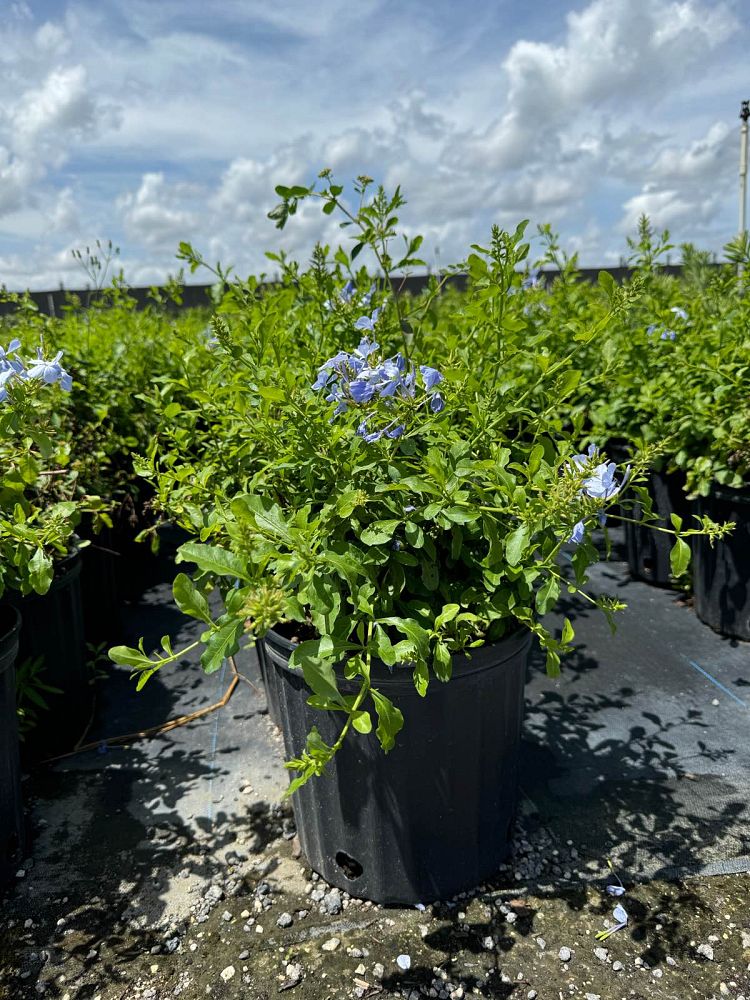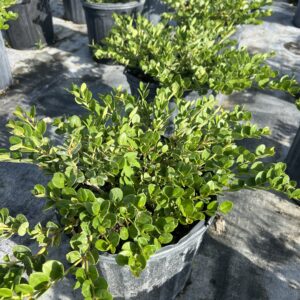Plumbago
Plumbago, or leadwort, is a genus of flowering plants known for its clusters of blue, purple, or white flowers that attract pollinators. Typically growing 1 to 3 feet tall, it prefers full sun to partial shade and well-draining soil. Thriving in USDA Zones 9-11, it’s ideal for Florida landscapes as borders, ground cover, or in containers. Fun fact: The name “plumbago” comes from the Latin word for lead, as some leaves were historically used to produce a lead-like pigment!
$22.63
Related products
-
All Products
Carissa Emerald Blanket
$22.63 – $108.65 This product has multiple variants. The options may be chosen on the product page -
All Products
Bougainvillea Bush
$43.46 – $434.62 This product has multiple variants. The options may be chosen on the product page
Plumbago refers to the genus Plumbago, commonly known as leadwort or blue plumbago. It is known for its beautiful clusters of blue or white flowers and is often used in gardens and landscapes. Here’s an overview of this appealing plant:
Description
Size and Height: Depending on the species, it typically grows between 1 to 3 feet tall, with some varieties reaching up to 6 feet.
Flowers: Features clusters of tubular flowers that bloom in shades of blue, purple, or white, attracting butterflies and other pollinators.
Care
Light: Prefers full sun to partial shade; full sun encourages more abundant flowering.
Water: Requires regular watering, especially during dry spells. Once established, it can tolerate some drought.
Soil: Thrives in well-draining soil, tolerating a range of soil types but prefers slightly acidic to neutral pH.
Fertilization: A balanced fertilizer can be applied during the growing season to promote healthy blooms.
Indoor vs. Outdoor
Indoor: Can be grown indoors in bright light but may require pruning to maintain size.
Outdoor: Best suited for outdoor gardens, particularly in tropical and subtropical climates.
Growing Zones
USDA Zones: Thrives in Zones 9-11, making it well-suited for Florida and other warm regions.
Florida and Landscaping
Florida: A popular choice in Florida landscapes for its vibrant flowers and ability to attract pollinators.
Landscaping Use: Ideal for borders, ground cover, or in mixed plantings. It can also be used in containers.
Additional Information
Pests and Diseases: Generally resistant to pests but can occasionally face issues with aphids or spider mites. Regular monitoring helps manage these.
Pruning: Prune to shape and encourage bushier growth, ideally after flowering.
Fun Fact
The name “plumbago” is derived from the Latin word for lead, as the leaves of some species were historically used to produce a lead-like pigment.
Overall, Plumbago is a vibrant and versatile addition to any garden, providing color and attracting wildlife with its beautiful blooms.
| Size | 3 Gallon |
|---|



